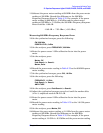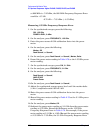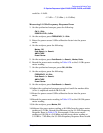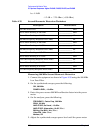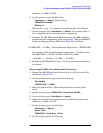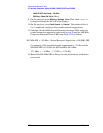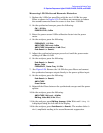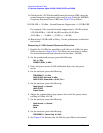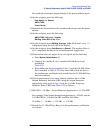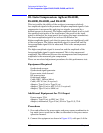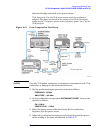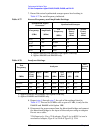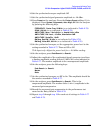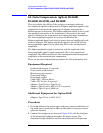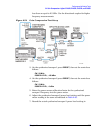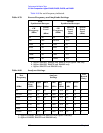
Chapter 2 289
Performance Verification Tests
32. Spurious Responses: Agilent E4404B, E4405B, E4407B, and E4408B
the synthesized sweeper output directly to the power splitter input.
10.On the analyzer, press the following:
Peak Search (or Search)
AMPLITUDE
Presel Center
11.Reinstall the filters between the synthesized sweeper and the power
splitter.
12.On the analyzer, press the following:
AMPLITUDE, Ref Level, –40 dBm
BW/Avg, Video BW, 30 Hz
(Man)
13.On the analyzer, press
BW/Avg, Average, 10 Hz. Wait until “VAvg 10”
is displayed along the left side of the display.
14.On the analyzer, press
Peak Search (or Search). The marker delta (∆
Mkr1) amplitude reading is the second harmonic suppression.
15.If the marker does not appear to be on a signal, do the following:
a. Press
Marker, Select Marker (2)
b. Compare the marker 2 (Mkr2) and the 6.2 GHz Noise Level
recorded in
Table 2-76.
c. If the difference between marker 2 (Mkr2) and the 6.2 GHz Noise
Level recorded in Table 2-76 is less than 2 dB, check the box on
the performance verification test record that the 3.1 GHz SHI test
was noise limited.
16.If the measurement is not noise limited, calculate the 3.1 GHz
Second Harmonic Intercept (SHI) using the second harmonic
suppression value read in step 14 and the 3.1 GHz Frequency
Response Error (FRE) from Table 2-76 as follows:
For example, if the second harmonic suppression is –103 dB, and the
3.1 GHz FRE is –1.20 dB, the SHI would be 91.8 dBm:
17.Record the 3.1 GHz SHI as Entry 8 in the performance verification
test record.
3.1GHz SHI 10– dBm Second Harmonic Suppression 3.1 GHz FRE+–=
91.8 dBm 10 dBm– 103 dB–()– 1.20 dB–()+=



